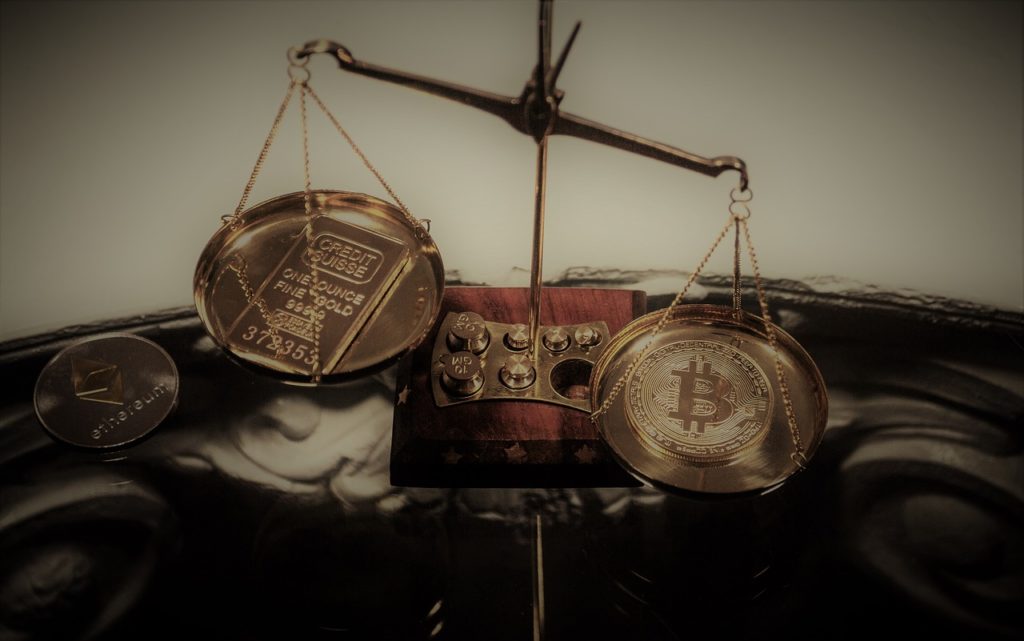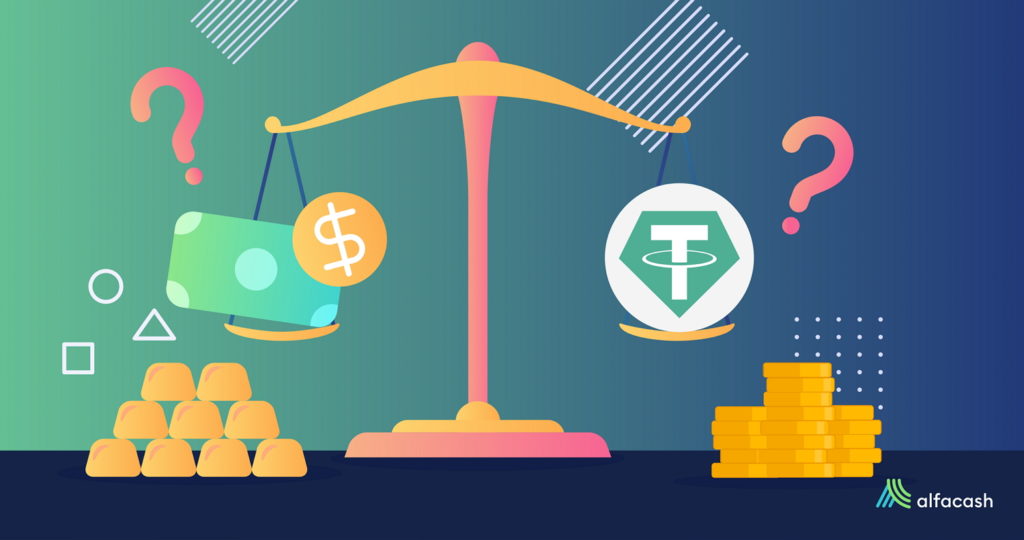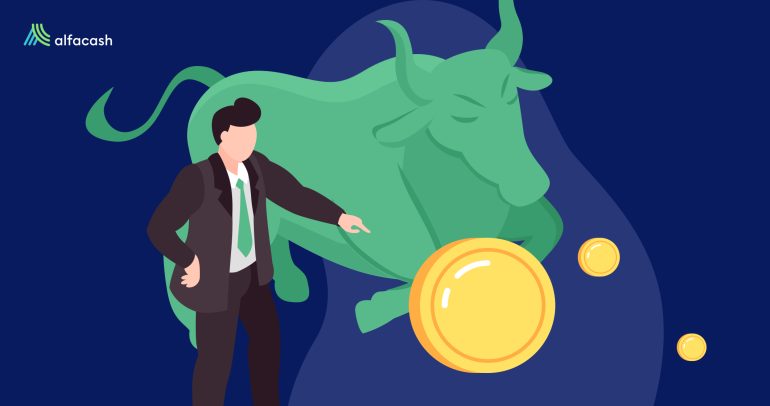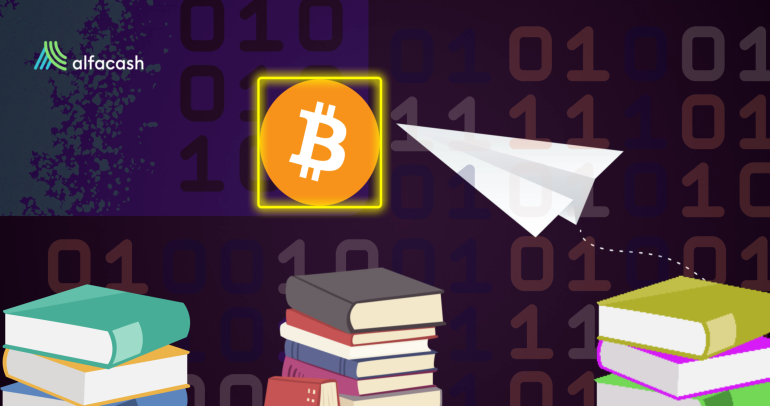Cryptocurrencies can be very useful, but also kind of cumbersome when you don’t want your funds submerged into high volatility. BitcoinBitcoin is the first decentralized digital currency. It was created in 2009, by an anonymous founder or group of founders... More price can be at 1 today, at 0.5 tomorrow and in 5 the next day. Of course, there are some tendencies and some game theory, but you really can’t relate the term “stable” with most cryptocurrencies… except for the so-called stablecoins.
These are digital assets built with cryptographyCryptography is the mathematical basis for secure communication that allows only the sender and intended recipient of a message to... More (or another type of cryptocurrencyA digital currency running on a blockchain and built with cryptography. Contrary to central-bank issued currency, cryptocurrency issuance rules are... More, if you prefer), designed to maintain a fixed price. Kind of. They peg their prices to other assets, considered more stables. It’s very usual, for example, to find stablecoins backed by USD with a 1:1 ratio. So, their price is around $1 per token.
However, not every stablecoin type works in the same way, and definitely not all of them are backed by USD. The underlying asset used to minimize the natural volatility in stablecoins can be another fiat currency, a commodity, different cryptocurrencies, or the code itself. Let’s check that.
Types of stablecoins or why they’re “stable”
In order to get some sense of stability amid this wild market dominated by supply and demand, the stablecoins use some techniques that can be centralized or decentralized. So, basically, they can be backed by another asset or manipulate their total supply to keep the price they want.

Backed by commodity or fiat
You can think of this type as gift cards or meal tickets: they have value because they represent another thing. But not “any” thing (like money), but a specific thing in a fixed quantity. Just like your meal ticket, which represents… you know, one meal. You won’t wake up the next day to see that your ticket magically transformed to represent two meals, half meal, or an elephant, so, you can say it’s something stable.
The stablecoins backed by commodities or fiat currencies work similarly. Their developers choose (and own) the underlying assets to imprint value inside a new-created token. This is important: they can’t just create some token on Ethereum (for example) and say, “Hey, it’ll worth a dollar because we said so”.
The trick is the units of the new stablecoin will worth 1 USD, EUR, CNY, one gram of gold, or whatever because the developers, as individuals or as a company, own the same quantity of such assets. This means, if there’s no meal, then there’s no legit meal ticket.
And how do you know they actually own the quantity they’re issuing to the public and aren’t putting up for sale some valueless tokens? Well, that’s… a thing. They can be as transparent as possible about their reserves, but this isn’t the more decentralized process. It’s almost fully centralized, indeed.

Tether (USDT) is probably the greatest example of this case. It’s issued by the company Tether Limited, which should own every dollar that USDT represents out there. However, USD Coin (USDC), Paxos Standard (PAX), and True USD (TUSD) are also nice examples, all backed by USD. Some others, like Digix Gold (DGD) are backed by gold or other commodities.
Crypto collateral
We already passed through the meal ticket, now let’s talk about mortgages and some loans. The process in those cases is very simple, right? The bank/company/person lends you some money, but not without a warranty they can take if you aren’t able to repay them. In the case of mortgages, that warranty is a house. With other parties, it can be a car or another asset.
To make decentralized assets, that warranty (collateral) are other cryptocurrencies. So, this type of stablecoins isn’t backed by assets outside the crypto world, but by other cryptocurrencies. Usually, a basket of them to reach more stability. To use collateralized coins, the users should often lock-up some cryptocurrency funds inside a smart contract, which will serve as a warranty of value.

The price can be expressed with fiat currency (USD are very usual), but the collateral and the monetary policy determined by the system (and controlled by the users) are the real “underlying asset” this time. Which means the real stuff that makes them valuable without intermediaries.
Probably the best example of this type is DAI by MakerDAO. They use ETH as collateral to issue new coins, which price will be pegged to USD. Besides, it allows the use of a basket of crypto-assets as a reserve.
Algorithms and banks
Well, not always the stablecoins are a representation of something else. Sometimes, they can be backed just by their own code, and that’s it. The developers mimic something similar to what central banks do to stabilize the prices: mint new coins if the price goes up, and destroy a part of the current supply if the price goes down. The scarcity creates value, after all.
Usually, the ultimate goal is to keep around 1 USD price per unit, even without underlying assets or crypto collateral. The internal system and the algorithms of the currency are designing specifically to track those possible price changes and act on the supply to maintain stability. They’re fully decentralized, but complex and no so popular.

The defunct Basecoin (now resurrecting as Basis Cash) is the example we have for this kind. The purpose of its system is to work without any underlying asset, and more similar to a central bank. There are some coding and regulatory concerns, though.
Why the stablecoins matter?
The short answer for the users is that they’re able to provide a store of value, a stable medium of exchange, and a hedging mechanism for traders. Besides, they’re a fundamental part of the booming DeFi ecosystem and the yield farming activities. As DappRadar commented in a report:
“The stablecoins proved highly popular for farmers, and even with high-interest rates, the proposition was profitable. This was in part due to the fact that the underlying assets loaned and borrowed were stable. Once the attention turned to volatile tokens the community was forced to adjust the distribution strategy. This yield farming strategy catalyzed stablecoin activity.”
Beyond that, they’re also very important for financial authorities all around the world, since they’re sensing this kind of assets as possible threats to their economies. The Financial Stability Board, an international regulatory entity, even stated that if the adoption continues, all the stablecoins types could have “significant impacts on economic activity and financial system functioning”.

That’s why there are already efforts to regulate their use in several countries. The United Kingdom will publish new guidelines about it the next year, and the European Union is preparing “strict requirements for issuers of crypto-assets” in their region. The United States is following suit in the matter, and worth mentioning that Basecoin was first shut due to regulatory concerns in 2018.
In conclusion? Stablecoins are very useful, but they probably won’t go unregulated for so much more time.
Wanna trade BTCAn abbreviation for Bitcoin., ETH, and other tokens? You can do it safely on Alfacash! And don’t forget we’re talking about this and a lot of other things on our social media.
Twitter * Telegram * Instagram * Youtube *Facebook * Vkontakte








